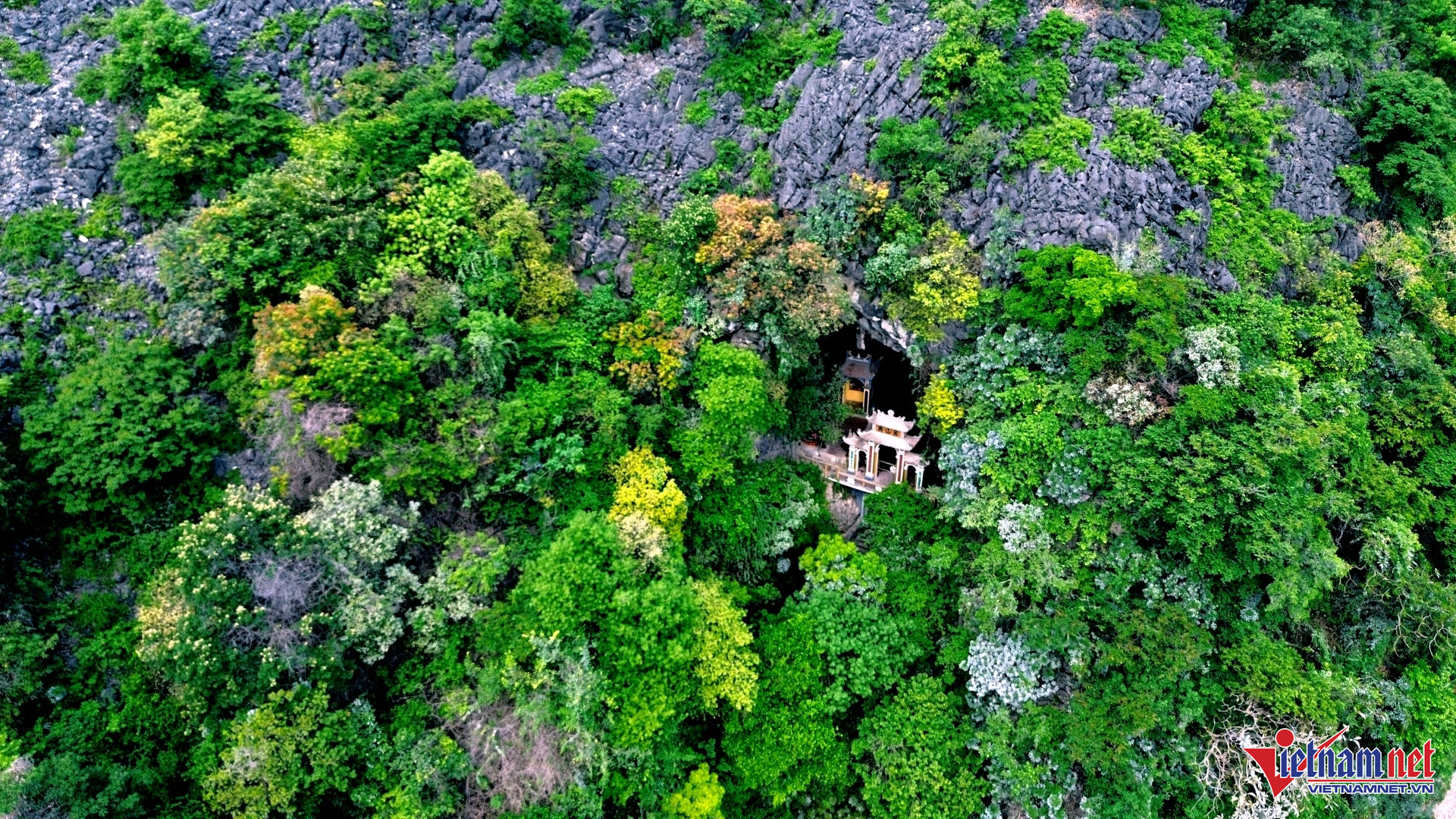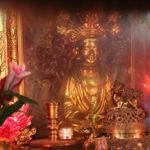King Minh Mạng bestowed upon this place the five words “Nam thien de tam dong” (the third most beautiful cave in the South) during a trip in 1821.

Located midway up the mountain, the cave emits a wind that sounds like a flute when standing at its entrance. Photo by Tran Nghi
According to historical records, in 1739, a woodcutter discovered this cave while gathering firewood. Inside, he found numerous stalactites resembling Buddha statues, so he set up an altar. In 1740, the locals built a road and a temple to worship Buddha, naming it “Nham Son dong Co Am tu,” which means Co Am Temple and Nham Son Cave.
The Dich Long Cave and Temple were recognized as national historical and cultural relics in 1990. This complex of relics and scenic spots includes a stone pavilion (with 16 monolithic columns), a temple dedicated to Ly Quoc Su (also known as Saint Nguyen by the locals), the Ha Temple, and a Buddha garden.

The cave’s front yard houses the altars of the Lady of the Upper Realm and the Holy Mother. Photo by Tran Nghi
To reach Dich Long Cave, visitors must climb 105 stone steps from the mountain’s base to its entrance. The front yard of the cave features altars dedicated to the Lady of the Upper Realm and the Holy Mother.
Dich Long Cave consists of two areas: Hang Sang (Bright Cave) and Hang Toi (Dark Cave). Both areas boast countless stalactites in various shapes, resembling Buddha statues, a kneeling elephant, lions, horses, and elephants and tigers drinking from vessels.

The cave contains several shrines. Photo by Tran Nghi
Dich Long Cave has three interconnected caves, and when standing at the entrance, one can hear the wind whispering like a flute.
Locals refer to this phenomenon as the giant stone flute and named the cave Dich Long, with “dich” meaning flute and “long” meaning wind.

The cave also houses a stone stele inscribed with Chinese characters. Photo by Tran Nghi
During the resistance war against the French, the temple and cave served as a revolutionary base, storing weapons and housing a weapons production facility for the Vietnamese army and people.
Ms. Nguyen Huong Lan, Deputy Head of the Culture and Information Office of Gia Vien District, shared that the Dich Long Temple is currently managed by the People’s Committee of Gia Thanh Commune.
The local government has not yet developed this site as a tourist attraction, and the number of visitors remains small, mostly consisting of locals.

The stalactites create a mystical atmosphere inside Dich Long Cave. Photo by Tran Nghi
Every year, on the 6th and 7th of the third lunar month, the people of Gia Thanh Commune hold a festival at Dich Long Temple, praying for peace, prosperity, and happiness.
The Ultimate Guide to Invoking the Three Jewels: A Step-by-Step Guide to the Perfect Ceremony in 2023
“The Three Jewels: Unlocking the Heart of Buddhism.
Delve into the profound concept of the Three Jewels, the cornerstone of Buddhist practice. The Buddha, the enlightened teacher; the Dharma, his timeless teachings; and the Sangha, the compassionate community—together they form the sacred triad that guides seekers towards enlightenment and liberation.
This article will serve as your comprehensive guide to understanding the significance of the Three Jewels and their role in Buddhist worship and practice, providing you with a deeper connection to this ancient and profound philosophy.”
The Enchanting Allure of an Ancient Temple: Where Business Professionals Seek Fortune and Luck
Hidden amidst the tranquility, the ancient temple conceals numerous mysteries about its origin and revered deity. This sacred destination is renowned for its spiritual significance, attracting a multitude of people who seek fortune, peace, and especially, businessmen who yearn for prosperity and blessings.



































